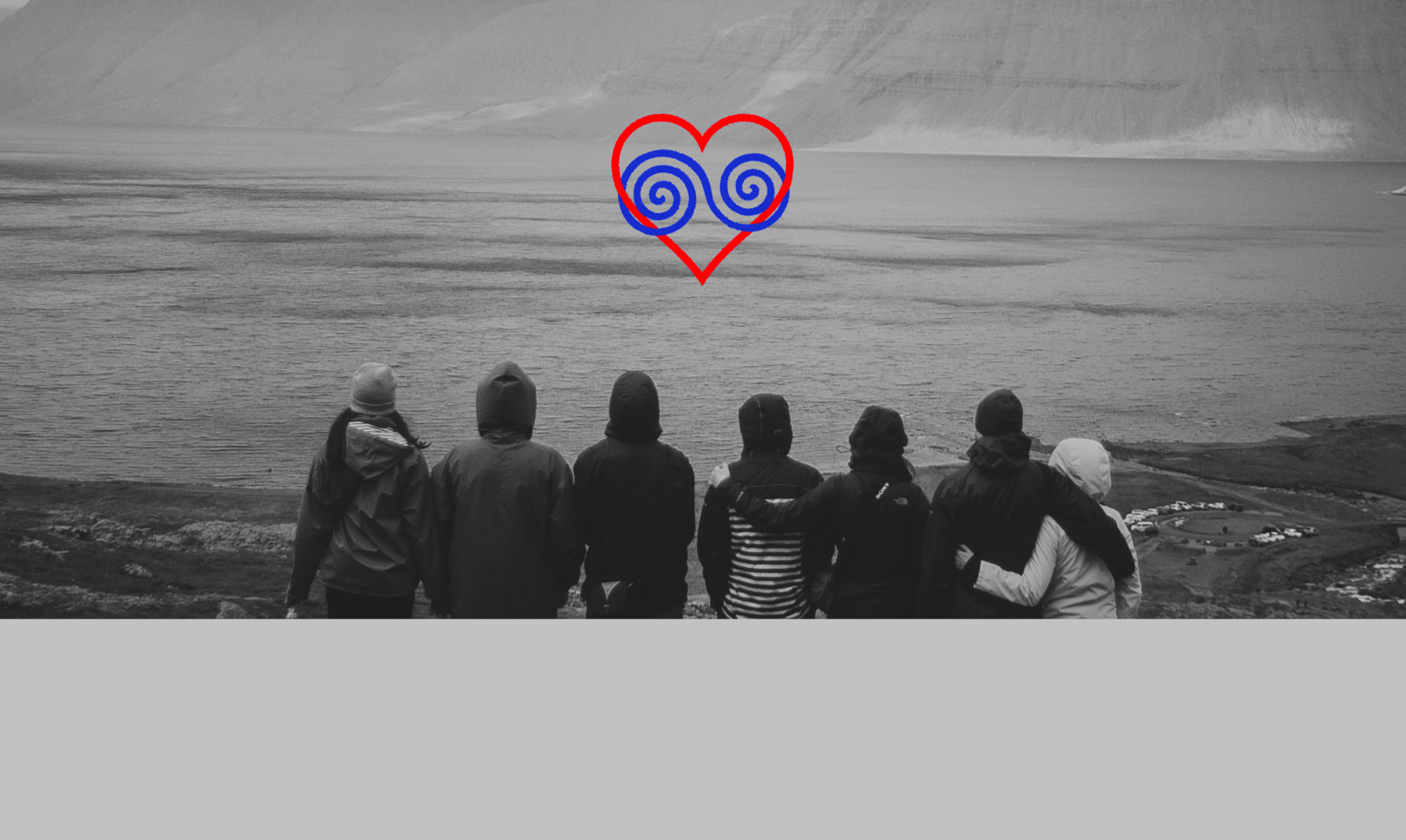Relationship-Anatomy

The US-American medical drama television series “Grey’s Anatomy“ certainly deserves the title “epic” thanks to its almost 20 seasons. With minor interruptions since 2005, there has been healing and hoping, loving and loosing, sharing and separating – whatever it takes.
As with most medical series, the purely medical aspects of this format actually merely set the framework for the plot. In detail – and quite predominantly – it is about the interpersonal relationships of the hospital staff, their weal and woe in the search for…
Yes, what actually?
On the relevant streaming services, the long-term broadcast is even tagged (and recommended) as an “LGBTQ series” – reason enough to appear here on my bLog purely because of that?
Well… The series does feature lesbian and gay people, and the topic of gender identity – and also the changing of it – is dealt with in several episodes.
However, from a polyamorous point of view, the series could be seen rather as a somewhat gory long-term disaster caused by a surprisingly traditional and conservative social morality.
Because on the one hand, there’s a lot of flirting and screwing going on between interns and senior residents. There’s plenty of infatuated sex, consolation sex and even retaliatory sex…
But on the other hand: Strictly speaking, this colourful series, in which misunderstandings are kept in the room with nice regularity, in which opponents are misinterpreted as unfavourably as possible, and in which the most negative motives are assumed in case of doubt, is merely one long chase for the ultimately “right one“.
And so the label “LGBTQ” is also unfortunately only limited to a delicate nudging against heteronormativity¹. Whether lesbian or gay: As a matter of principle, these participants of the rainbow are also only looking for their one soulmate to be happy with for the rest of their lives. Likewise the transgender person who, as expected, also hopes for an existence at the side of yet one more person who accepts him or her as he or she is… – …but alas, the emphasis remains solely on “one”.
So, because the series comes across as so ravishingly mononormative² in this capacity, it thus already seems to promise at first glance the above-mentioned battleground of relationship chaos flaring up everywhere.
Now, for one thing, the lively ring-around-the-rosie game with varying genital contacts is, to a certain extent, a tacitly legitimized exploratory space of the monoamorous society designed for single people trying to figure out their market-value… To achieve this purpose, even collateral damage is considered acceptable – after all, this all occurs as part of the generally accepted endeavour to find the best/most suitable counterpart for oneself.
In this way, hearts are regularly broken, hot vows of commitment are sworn, strangers suddenly become “items”, living space is taken up together, and even hasty marriages take place, only to safeguard the best match on the contested terrain.
And so it happens as it has to happen: With similar regularity, the relationships configured in this way finally break up again; often because suddenly some aspects of the other person emerged that had been completely overlooked in the frenzy of the battle – or because one’s own belief that there could possibly still be a more precisely fitting partner out there finally gains the upper hand – nourished by accumulating doubts concerning the current state.
For another thing, the dynamic just described is reinforced by the somewhat peculiar assertion of the monomormative ideal that this “game” has to stop at the very moment when the “one” has been found / resp. obtained. While people were just romping through various beds with the hope of gaining experience and selecting compatibility, this hormonal pilgrimage is supposed to end at the exact moment when the “holy grail” of the best possible fit has been found in the form of the future life partner. Also this abundantly utopian maxim, which is human as well as above all perfectly individual character traits in no way appropriate, contributes in the series (as well as in reality) to the intensification of drama, of suffering, and finally to various separations – which impose themselves as inevitable.
All the viewers of the series, who already harboured certain doubts about the “one eternal relationship for life”, start rubbing their hands with delight at this point time and again:
Grey’s Anatomy confirms again and again in the mirror of a TV series the obvious reasons for still high divorce rates³ – and thus, strictly speaking, also the structural dysfunctionality of what is dubbed by its critics (especially in Relationship Anarchy) as the bigoted cheat package “RDR”, the “Romantic Dyadic Relationship”.
Most readers of this bLog – and I as a writer – can probably understand this point of view. After all, living in multiple relationships confronts us with these very phenomena that occasionally make you want to shout out to the show’s characters, “Hey, have you ever thought what would happen if you didn’t have to choose between these two people right now!?”
The dynamic of Grey’s Anatomy, which lives from the fact that it is always a matter of having to make a decision, even to the greatest pain for all those involved, would of course immediately evaporate. No matter whether in the premarital “race” always only one goal has to be pursued and courted in serial manner – or whether after the “finish” untouchable twosomeness has to prevail at once, for otherwise immediate breakup has to be the indispensable consequence.
However, we (I allow myself to write this in collective terms), the “multiple relationship folks”, know that we can be in more than one romantic-intimate loving relationship with different people at the same time. And we know that our feelings for additional other people can arise even if we are already in “established” companionships – and these connections are allowed to exist simultaneously and do not have to inevitably replace each other.
Thinking in terms of multiple relationships effectively welcomes the “and” – and perceives an “or” as a pre-reducing convention.
But then why don’t we do so much better in multiple relationships?
If Grey’s Anatomy took its “LGBTQ label” more seriously, if the series included not only gender identity and sexual orientation, but also alternative kinds of relationships and ways of loving, would it automatically be less dramatic?
Unfortunately, I don’t think so, because at second glance, the conclusions that the TV series suggests regarding our general interpersonal relationship- and especially relationship-initiation behaviour are nevertheless mostly applicable to multiple relationships as well.
After some time, I’ve been reading more intensively through various forums concerning our topic in the past few weeks – and would now have to admit that things are often not all that different in the realms of multiple relationships than they are in pre-prime time series.
Two focal points in particular, which the creators of the series Grey’s Anatomy regularly use for constant excitement – and which I have already briefly referred to above – quickly turn every (love)life into a full-scale melodrama, even when it comes to relationships with more than just two participants.
► Too much – too fast
In the hospital, getting to know each other takes place at work, followed by a fast-paced flirtation in which friends and acquaintances are yet welcome to contribute tips and speculations – but it is not long before the core participants find themselves in a physical rendezvous (usually) in one of the facility’s on-call rooms. The immediate initiation of a sexual encounter seems to be an indisputable part of the process of getting to know each other – and afterwards it is either “great love” or at least a purgatory of inflamed passions, because some subtleties have not been clarified – which however in any case urges repetition and continuation. And because the close environment has noticed the dizzying progress accordingly and now with the briskly initiated sexuality “facts” in the sense of socially accepted pair bonding were created to a certain extent, further steps of a fully comprehensive relationship must be quickly established. At least for the appearance – and at least so far that one convinces oneself (and the potential partner being) of the tide of events (see also previous Entry 89).
At the beginning of this Entry today, I described the underlying morality in Grey’s Anatomy as “surprisingly traditional-consevative”.
But perhaps the series is also more profound because it contrasts the hasty behaviour of the participants – with which they sometimes bring about the demise of a relationship even faster than they realize – with an inner longing: The desire to get to know each other thoroughly – in order to become clear about the perspective for true familiarity and closeness.
Monogamy may strike us as a kind of somewhat strange (and, at its core, probably unnecessary) self-restraint. Nevertheless, what is valid in monogamy just perhaps for “only one” partner, that is valid for us in Poly- or Oligoamory just as well. For the “love-race” described above, so suitable for TV series, is merely the remaining distorted image of a hope that dwells in all of us: to have people around us who accept us as we are. And in return to gather people around us whom we trust despite all their peculiarities.
In Poly- and Oligamory, too, however, we often get carried away too quickly by trying to shorten this process – or, if possible, to pre-empt the result of the development in advance. In this way, we also create hasty “facts” in which, after a short time, several people may have to deal with a lack of certain fundamentals that are precisely necessary for communal trust, an appropriate appreciation of values, and a certainty that derives only from accumulated experience. As a result, insecurity about oneself and others begins to spread, mundane characteristics become quirks that are difficult to bear, and the very peace in the relationship that everyone involved is actually looking for fails to materialize.
Which leads straight to the next point.
► Always assume the worst
In Grey’s Anatomy it’s already a mannerism, to some extent: the characters, even when they are close friends, constantly manage to misunderstand each other in the most drastic way. For this, it helps enormously never to ask questions, but to be sure what the other person wants, needs or intends – and of course: to interpret the actions of the other persons as if they had the malice to cause the greatest possible mischief. If it were not a TV series, one could wonder as a viewer how this is even possible among people who on the one hand belong to a regular circle of friends (where each other’s biographical backgrounds is known) – and on the other hand have to work hand in hand on a daily basis to save lives…
But not every one of us has to save lives every day – ok, apart from our own – right?
However, our human-evolutionary embedded negative expectation (see also Entry 43) occasionally clouds our vision even under normally-established everyday conditions. Often another typical human characteristic is added to this, which is the tendency to regard the standards of one’s own actions as generally valid for all others (by the way, this is also a Cognitive Bias from Entry 89: Egocentric Bias) – and thus to weight deviations from them as unwise or even as deliberately wicked.
If, in addition, another seed of insecurity awakens our dogs, which are snoozing at best (for “sleeping” would be a euphemism…), then most affairs – especially in relationship matters – take a truly unpleasant turn.
Especially in combination with the upper section “Too much – too fast”, all persons involved may find out that – to use a tennis metaphor – they rushed to the net too hastily – and that they have not yet contributed sufficiently to a basis of commitment which makes the behaviour of the other persons involved appear predictable or (sufficiently) reliable. Of course, this is especially true at such a moment for potential newcomers who are still in the process of becoming acquainted. But it can also suddenly apply to existing partners with whom we thought we had already enjoyed established relationship patterns for a long time.
Polyamory – and Oligoamory – are ways of living and loving that, from their conception, want to meet these human characteristics with shared values.
Because fictions such as Grey’s Anatomy but also, for example, the “Harry Potter series” profit in their dramaturgy from the fact that even closely connected people who are on the same side simply do not speak to each other, the above-mentioned types of multiple relationship want to emphasize that equality and participation are elementary in a network of relationships; that there every voice, every idea, also every concern should be expressed and perceived with equal dignity and at eye level.
This forms the groundwork for all those involved to have the courage to be genuinely sincere and transparent, which is what provides the basis for mutual trust and true getting-to-know-you, which is worthy of its name. When everyone gradually becomes aware that the other people also recognize their contribution to the “whole”, reliability begins to develop – and from this, at some point, actual trust can grow.
In a somewhat unlikely place, I found an astonishingly appropriate quote on this subject. Robert Pölzer, editor-in-chief of the magazine “Bunte“, wrote on the coronation of the British monarch King Charles III (issue 20/23):
»Values make us defensible. Values are the foundation of love. For love without sincere values is not love, but only a game. Only those who give with their hearts can experience true love.«
When Mr. Pölzer says “defensible”, he means “resilient”. And resilience is what we need – in all our close human relationships – because our needs are precisely designed to carry us away, especially in those moments when we unconsciously or obliviously, like the proverbial donkey with the carrot, follow only our immediate affections.
We all possess resilience to varying degrees from the time we grow up. But according to the current state of science, it is also something that we are allowed to build on throughout our lives.
I therefore firmly believe that we can act like good physicians for us in this respect: Establish a solid vantage point, be true to your (multiple relationship) values, slow down when in doubt and act carefully rather than rashly – and confidently never assume the worst.
Because it is usually not so alarming in love life that it requires surgical intervention for almost all the cases I have ever experienced.
It’s a beautiful day to save lives.
¹ Heteronormativity is the concept that heterosexuality is the preferred or normal mode of sexual orientation. It assumes the gender binary (i.e., that there are only two distinct, opposite genders) and that sexual and marital relations are most fitting between people of opposite sex.
Heteronormativity creates and upholds a social hierarchy based on sexual orientation with the practice and belief that heterosexuality is deemed as the societal norm.
A heteronormative view, therefore, involves alignment of biological sex, sexuality, gender identity and gender roles. Heteronormativity is often linked to heterosexism and homophobia. The effects of societal heteronormativity on lesbian, gay and bisexual individuals can be examined as heterosexual or “straight” privilege.
² Mononormativity refers to the assumption that romantic and sexual relationships can only exist or are normal between two monogamous partners, thus referring to practices and institutions that privilege or value monosexual and monogamous relationships as fundamental and “natural” in society (Source: Wiktionary)
³ …but – contrary to media rumours – they are no longer rising; see HERE. (Source: divorce.com)
The last sentence of today’s entry originates, of course, from the popular series character Dr. Derek Shepherd (Patrick Dempsey).
Ok – and in Season 15 Episode 13 there is some guessing about Polyamory between three elderly people. But again it stops right there and remains mere speculation.
Thanks to the National Cancer Institute on Unsplash for the photo!










